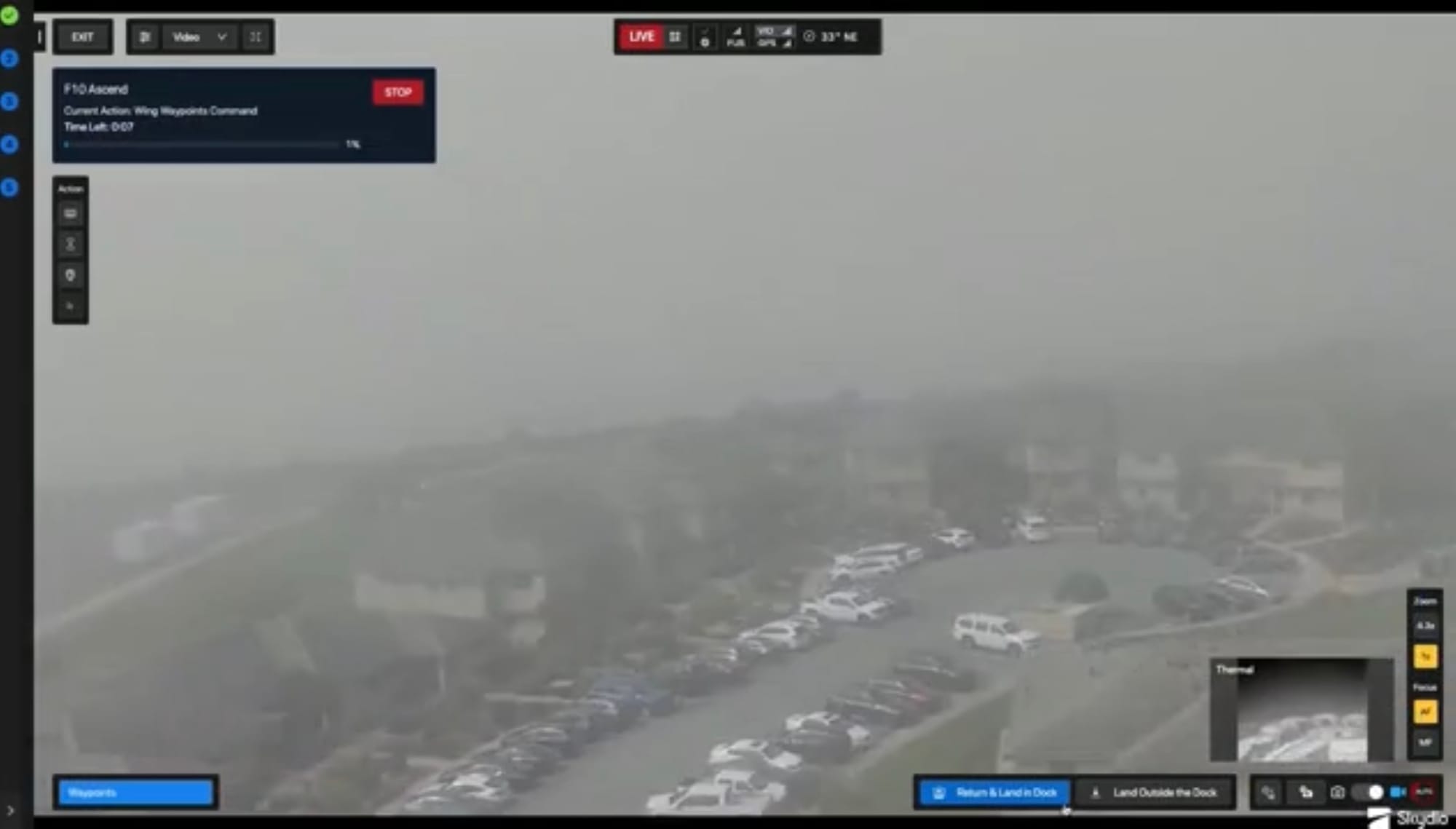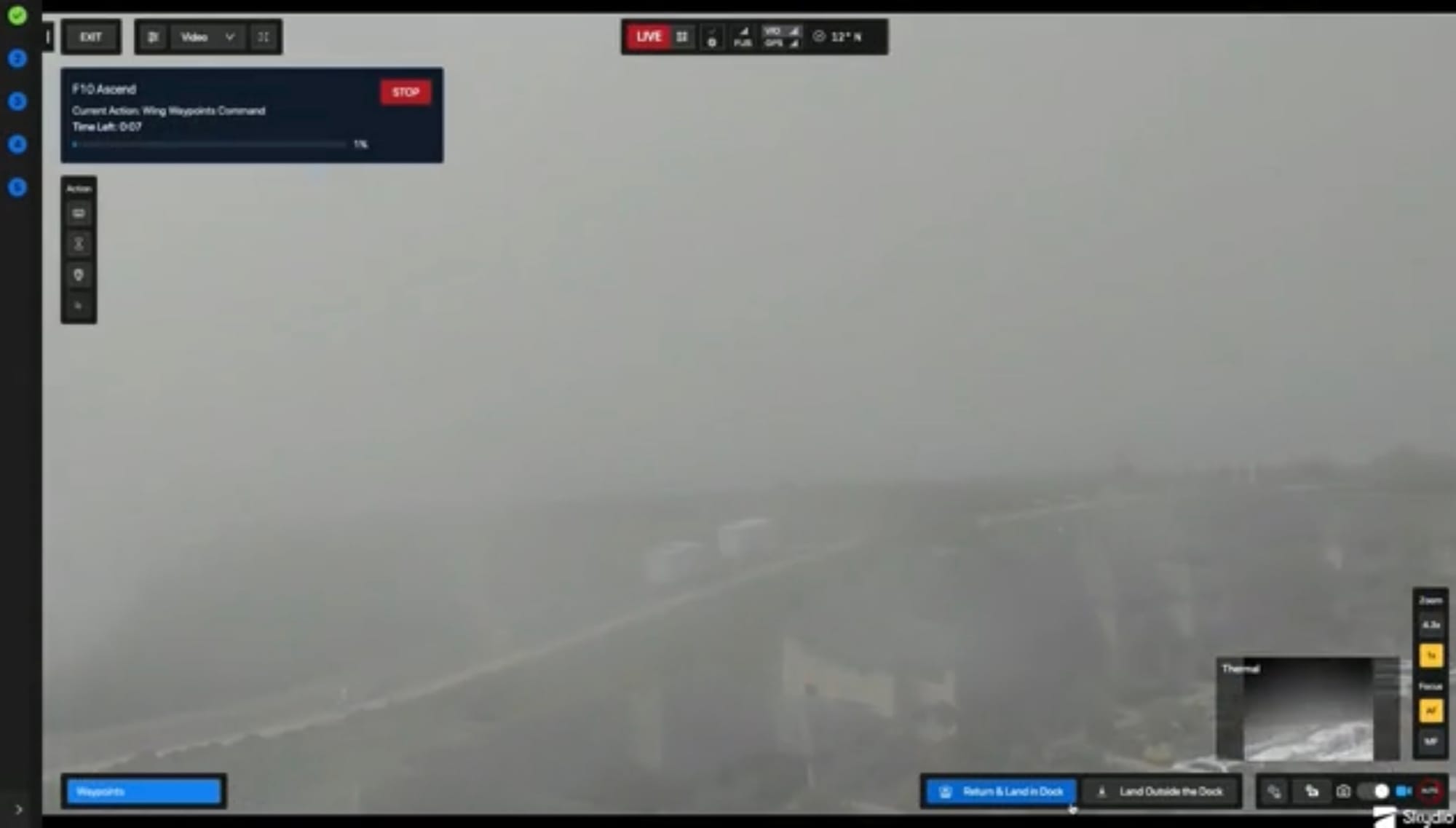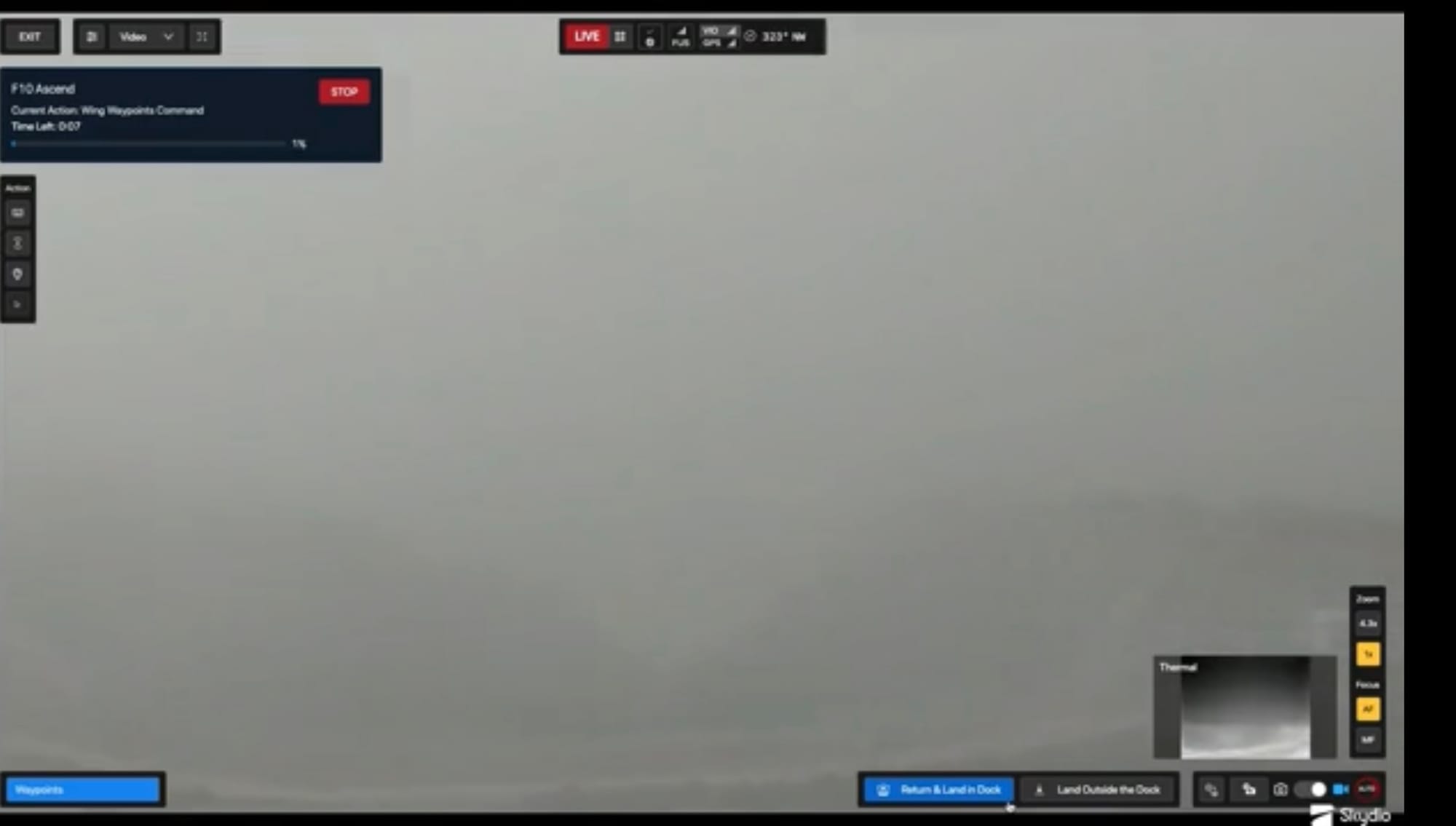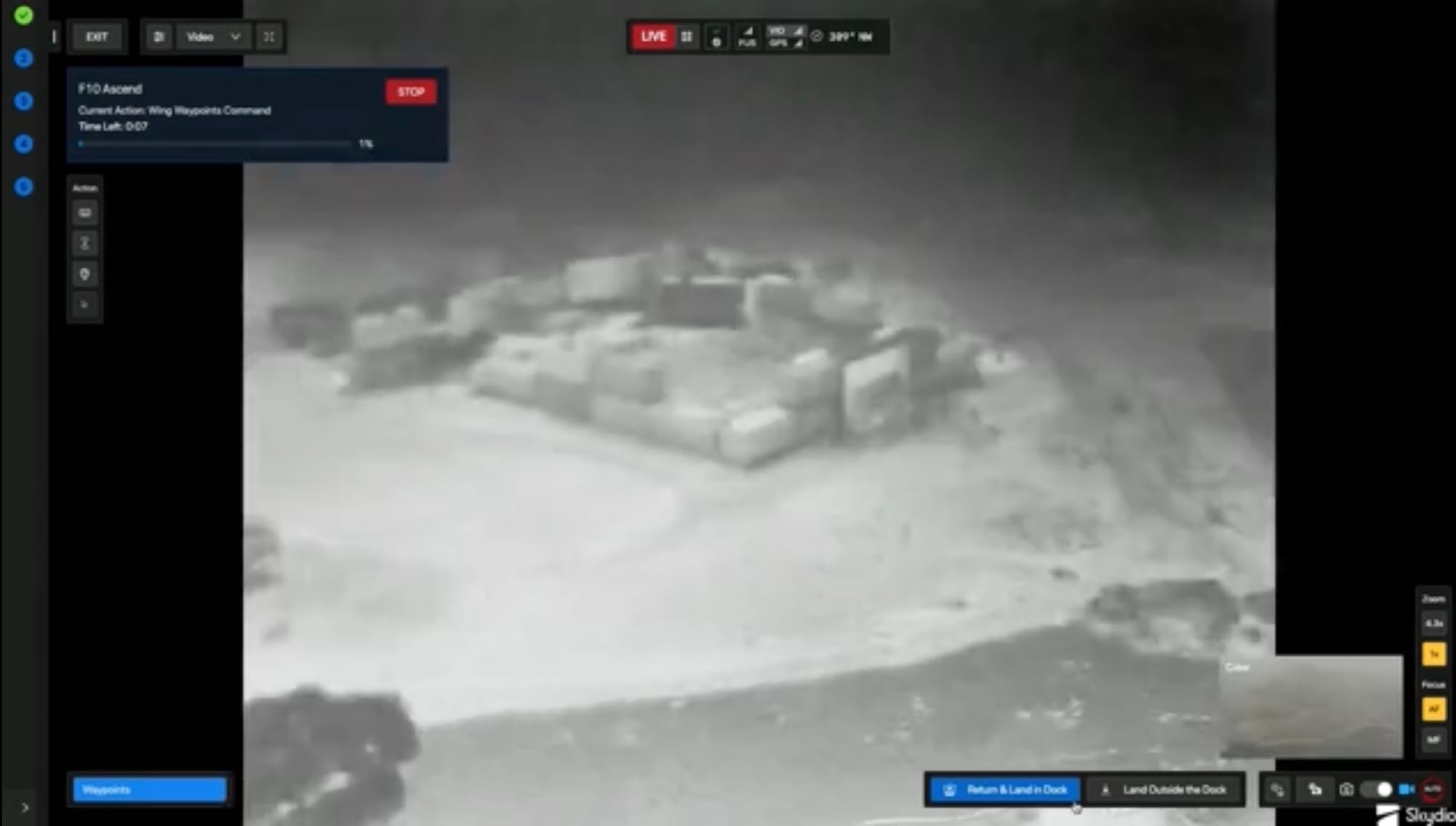At Skydio’s Ascend ’25 event in Santa Cruz County, the skies were anything but clear. As the company unveiled its new prototype drones, video footage shows the companies F10 VTOL dismounting from a Tesla Cyber truck with a robotic arm mounted in the rear, and it flies into what would appear to be thick gray clouds. Adam Bry, CEO of Skydio, called it "fog," but experts do not agree with the verbiage used on stage.
Under FAA Part 107, drone operations must remain clear of clouds and within the pilot’s visual line of sight. Meteorologists and aviation experts confirm that fog is, by definition, a cloud at the surface. If fog extends beyond six feet above ground level, as Advisory Circular 00-6B outlines, it is treated the same as a cloud layer. At Ascend ’25, Skydio’s drones were flying well above that threshold.
Video of Skydio F10 from Ascend 25 getting lost in the Clouds
The question that now hangs over the event is did these flights comply with the waivers Skydio had obtained, or did the company violate federal aviation guidelines?
Every waiver issued under Part 107 carries the same baseline restriction: “Operations into clouds is prohibited. The UAS must remain clear of clouds at all times.”
Skydio received two such waivers tied to its Ascend ’25 event: 107W-2025-02540, approved on September 8, and 107W-2025-03342, approved on September 16 — just one day before the Santa Cruz demonstration. Neither document granted authority to fly in obscured conditions or to operate beyond visual line of sight.
The FAA insists that all waivers move through the same pipeline. In an email to The Zero Lux, spokesperson Rick Breitenfeldt said: “All waivers go through the same process… emergency cases can be prioritized.” But when asked whether a product launch could be treated as an emergency, the FAA has yet to provide a response.
In a poll of Part 107 operators, most said routine waivers take 30 to 90 days. One pilot described a BVLOS request that took nearly a year, requiring “multiple rounds with the FAA.” Another, flying under a federal contract, said they received “no favorable treatment, nor did we request it.”
An industry source familiar with waiver processing described the approval cadence as unusually fast: “Waivers are typically approved in order. If you suddenly see one signed the day before a major corporate event, it raises questions about whether the process is as neutral as advertised.”

Together, the timing and language of Skydio’s waivers suggest a tension between how rules are written and how they are applied. The paperwork explicitly prohibits cloud entry, yet the demonstration went forward in conditions the FAA and meteorologists alike would classify as saturated air that are scientifically classified as "clouds."
Advisory Circular 00-6B,Aviation Weather, defines fog as “a visible aggregate of minute water droplets that are based at the Earth’s surface and reduces horizontal visibility to less than 5/8 statute mile.” A cloud is the same thing with its base above the surface. In practice, the difference is altitude, not substance.
Meteorologists confirm the overlap. Matthew Cappucci of MyRadar explained: “Air at saturation is air at saturation, regardless of altitude.” Caitlin Harvey of KETV-7 in Omaha agreed: “Fog are clouds at the ground level… I would say it’s the equivalent of entering a cloud.”
Skydio’s waiver carried an explicit restriction. Section 13(b) states:
“Operations into clouds is prohibited. The UAS must remain clear of clouds at all times.”




An aviation expert who reviewed the waiver noted that once the drone entered the fog layer, it was operating in conditions the FAA itself defines as cloud. By that standard, the demo had crossed directly into an operation section 13(b) forbids.
A 2020 peer-reviewed study in Atmosphere found that 67 percent of helicopter accidents linked to inadvertent flight into instrument conditions were fatal, underscoring how quickly visibility loss leads to operational failure.
Even Skydio’s own chief executive acknowledged the problem in real time. During the demo, Bry told the audience: “the fog might have confused the drone a little bit.”
Within the drone community, Skydio’s demo raised more questions than it answered. Several industry experts who reviewed the waivers told The Zero Lux the timing of approvals was unusual. Under normal circumstances, they said, waivers are processed in the order they arrive. If one appears to skip the line, it suggests special handling.
One expert familiar with FAA waiver processing explained that operators can wait months for even routine requests, with no option to accelerate the review. “You don’t get to jump ahead of the queue just because you have an event,” the source said. The fact that Skydio secured a waiver the day before its Santa Cruz County launch raised eyebrows among pilots still waiting on applications filed weeks or even months earlier.
“Fog is no different than a cloud when you’re flying in it. That’s why the FAA treats it that way," one expert said. The issue wasn’t only about technical definitions but about precedent. If a leading manufacturer appears to operate in ways the FAA’s own language prohibits, smaller operators may feel the rules are flexible when they are not.
Even those generally supportive of drone integration worried about the signal this sent. “The rules don’t change just because a company has a product launch,” one expert said. “If they can do it on stage, why wouldn’t any UAS operator assume they can too?”
FAA guidance defines fog as a cloud layer at the surface. Skydio’s waivers prohibited operations into clouds. Meteorologists confirmed that fog and clouds are the same phenomenon at different base altitudes. During the Santa Cruz event, CEO Adam Bry acknowledged that “the fog might have confused the drone a little bit.”
Aviation professionals who reviewed the waiver conditions told The Zero Lux that by ascending into what Skydio called fog, the aircraft was operating in conditions the FAA itself classifies as cloud — conditions expressly restricted by Section 13(b). The evidence strongly indicates that the flight was outside the limits of its waiver.
The FAA has yet to dispute this interpretation. Unless the agency provides clarification, it would appear Skydio’s demonstration entered conditions federal rules prohibit.





